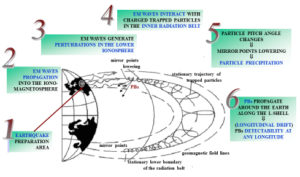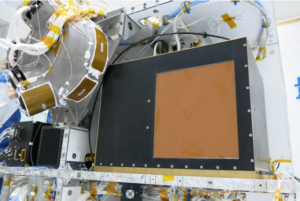PageContent
Cosmic Rays and Earthquakes: CSES – Limadou

The CSES (China Seismo-Electromagnetic Satellite) is a space mission dedicated to the measurement of the variability of electromagnetic field and waves, plasma and high-energy particles fluxes in the near-Earth space environment, and to the study of their correlations with the occurrence of seismic events. Data collected from the constellation of satellites will also allow the study of cosmic rays and their solar modulation.
The 2nd February 2018 the first satellite CSES-01 has been launched from Jiuquan. The satellite orbit is nearly polar, sun-synchronous at an altitude of about 500 kilometers. A second satellite, CSES-02, is currently under development.

The Italian contribution to CSES is based on the agreement between the Chinese National Space Agency (CNSA) and the Italian Space Agency (ASI) and has taken the name of Limadou. The Limadou Italian collaboration includes the INFN Divisions of Bologna, Naples, Perugia, Roma Tor Vergata, the INFN Center TIFPA of Trento, the INFN National Laboratories of Frascati, the Universities of Bologna, Trento, Roma Tor Vergata, Uninettuno and the Institutes INAF-IAPS (Italian National Institute of Astrophysics and Planetology) and INGV (Italian National Institute of Geophysics and Volcanology). The collaboration had the full responsibility in the design, construction, and testing of the High-Energy Particle Detector (HEPD-01) of CSES-01, conceived for optimizing detection of energetic charged particles precipitating from the inner Van Allen belts (as a result of seismic and non-seismic electromagnetic perturbations), and has collaborated in developing and testing the Electric Field Detector (EFD-01). The collaboration is now involved in the construction of the HEPD-02 and EFD-02 detectors for the CSES-02 satellite.
The Limadou Bologna group has been a key institution for the design and construction of the HEPD-01 detector, from the characterization of the PMTs, the development of the readout of the scintillators, to the integration of the all HEPD-01 scintillator counters. The group is also actively involved in HEPD-02 with similar responsibilities. The group is also involved in the HEPD-01 data analysis, in particular in the study of the performance of HEPD-01, with the purpose of improving the design of HEPD-02.
The Limadou Bologna group:
| Andrea Contin, Full Professor |
Federico Palmonari, Full Professor (Retired) |
| Alberto Oliva, INFN Researcher |
Michele Pozzato, INFN Researcher |
| Zouleikha Sahnoun, Research Fellowship |
Giuliano Laurenti, INFN Leader Technologist (Retired) |
| Mauro Lolli, INFN Technician |
Cristina Guandalini, INFN Technician |












